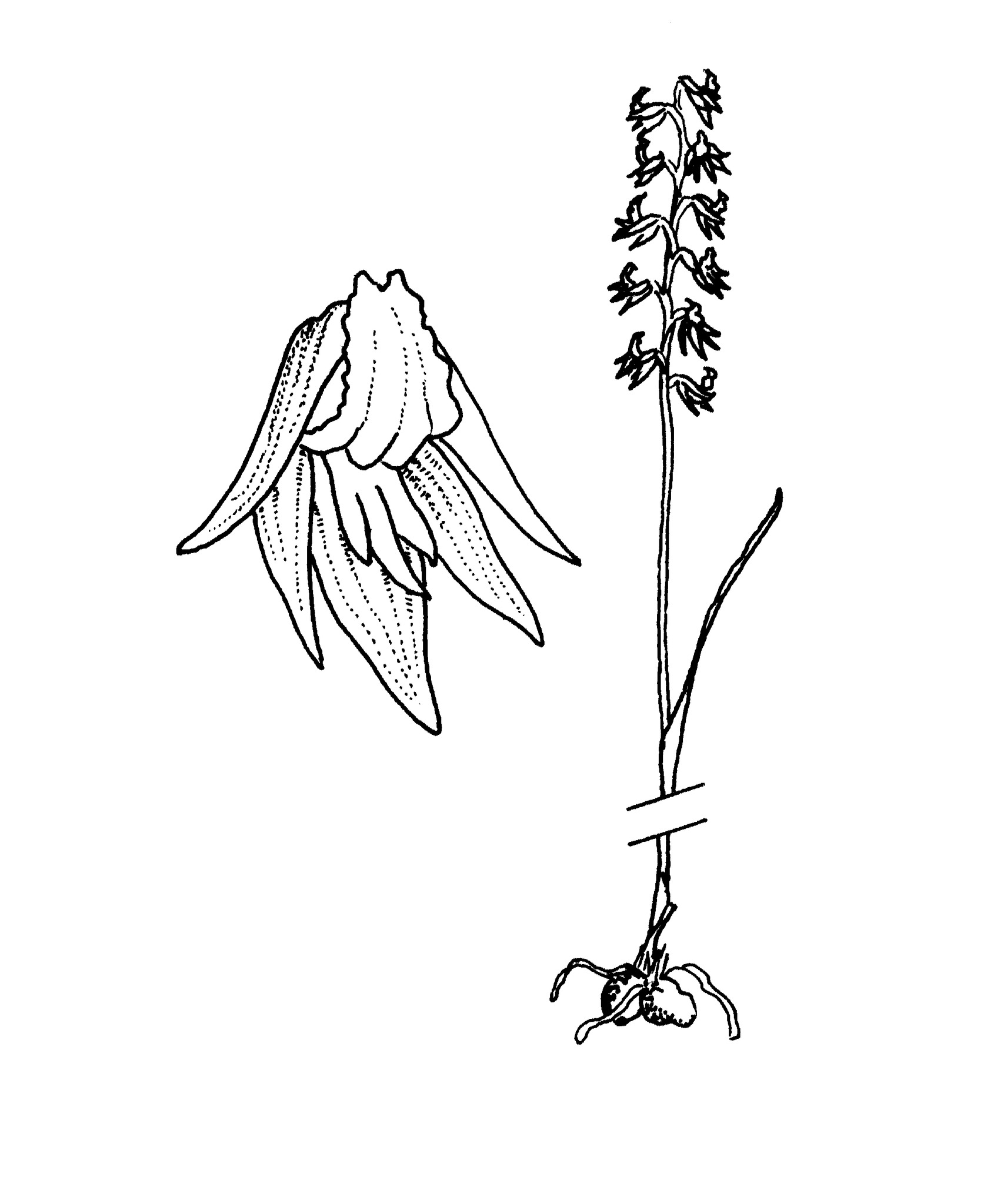
Greek prason – leek; phyllon – leaf; an allusion to the resemblance of the leaf to that of a leek or onion.
Terrestrial herbs, sympodial, deciduous.tubers spherical to ovoid, paired at base of leaf. Leaves basal, solitary, terete, surrounding flower stalk, usually with a long free lamina. Inflorescences a terminal raceme, erect. Flowers non-resupinate, few-many, small, variously coloured. Sepals similar, dorsal free, broader than laterals, laterals free or variously joined, sometimes pouched at base, spreading or parallel. Petals smaller than sepals, free, often spreading. Labellum entire or obscurely 3-lobed, clawed or stalkless, margins often wavy, callus large and fleshy. Column short, with entire or bilobed arms. Pollinia 4, in 2 pairs, granular.
These slender native terrestrial orchids are occasionally grown in pots by enthusiasts. They are difficult to maintain, but some limited success has been achieved in a light well-drained compost.
About 60 species mostly from Australia and New Zealand.
Erect inflorescence of small non-resupinate flowers; terete leaf enclosing part of flower stalk.
Backhouse & Jeanes (1995).
Source: (2005). Orchidaceae. In: . Horticultural Flora of South-eastern Australia. Volume 5. Flowering plants. Monocotyledons. The identification of garden and cultivated plants. University of New South Wales Press.
